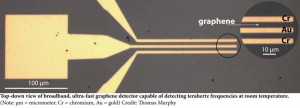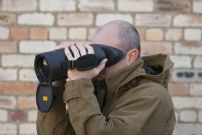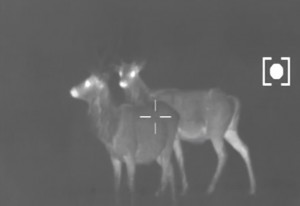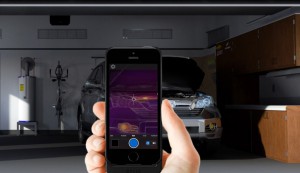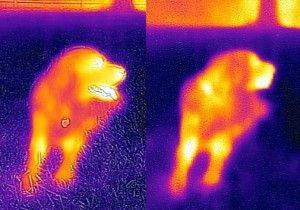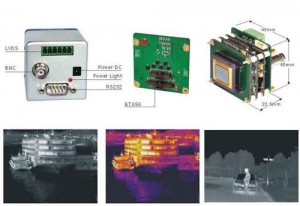In the unfiltered world there are no secrets. A wall or cloak blocks observation only by virtue of the limitations of vision, whether it’s those of the naked human eye or mechanical seeing devices designed around the parameters of a naked eye. If somehow humans could see light waves at all frequencies (and make sense of it), we could see everything.
We’ve developed an impressive array of tools with which it’s become possible to view the world at different frequencies of light, whether that involves the X-ray wavelengths used in radiography or the millimeter wave scanners (the sort that see through clothing) used now in many airports. While humans evolved to see a certain range of wavelengths for very good reasons—that’s where most of the useful information about our physical, terrestrial world can be found—technology has made much more available to us.
As impressive and creepy as a millimeter wave scanner may seem, it’s still just scratching the surface. Above these extremely high frequencies is another realm: Thermal Night Vision. It’s possible to probe the invisible world even deeper, going beneath not just clothing but skin, plastics, cardboard, and other opaque materials. Getting at these waves has historically been prohibitively challenging in the engineering sense, but a team of researchers based at the University of Maryland claims to have solved one of the fundamental problems with T-ray detection: temperature.
Thermal Night Vision is what’s known as non-ionizing—when an atom gets bombed with a T-ray its response is not to get rid of a newly energized electron, as what might occur in the photovoltaic effect (what’s behind solar power), but to keep that excited electron within its orbit. With nowhere to go, these increasingly energized (“excited”) electrons may generate lots and lots of destructive heat and radiation.
This non-ionizing feature is shared by much of the electromagnetism we interact with, including visible light. But it’s at the high energies of terahertz waves or microwaves that we find the becoming destructive. This is the fundamental barrier to using T-rays for imaging applications, and the researchers behind today’s paper describe a novel way of using graphene, the one carbon atom-thick wondermaterial, to solve the problem.
Graphene behaves a bit strangely when used within a T-ray detector. When those high-frequency waves (particles) are absorbed by electrons within a graphene lattice, instead of heating the lattice up, the energized electrons refuse to release any of their new energy.
Eventually, those increasingly energized electrons decide to bolt from their atomic homes. Usually, when exposed to T-rays, the electrons in a material acquire energy slow enough that they’re able to release the excess via photons (photons being the force-carrying particles of electrons), but here they’re able to save it up until they have enough to escape entirely. This is called the “hot-electron photothermoelectric effect.” These escaping electrons are then collected as electrical current.
T-rays can see through most everything, but just enough to get at the desired layer. They don’t penetrate as far as microwaves, for example. They’re also generally less destructive to biological tissue than X-rays. With regular old hemp poised to step in as a cheap graphene analog, the widely-deployed terahertz future may be quite close.
This article comes from motherboard edit released
